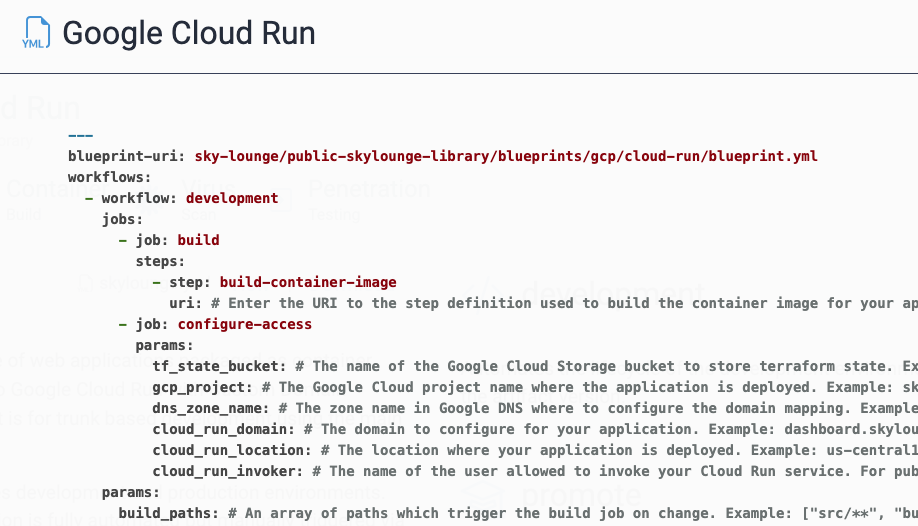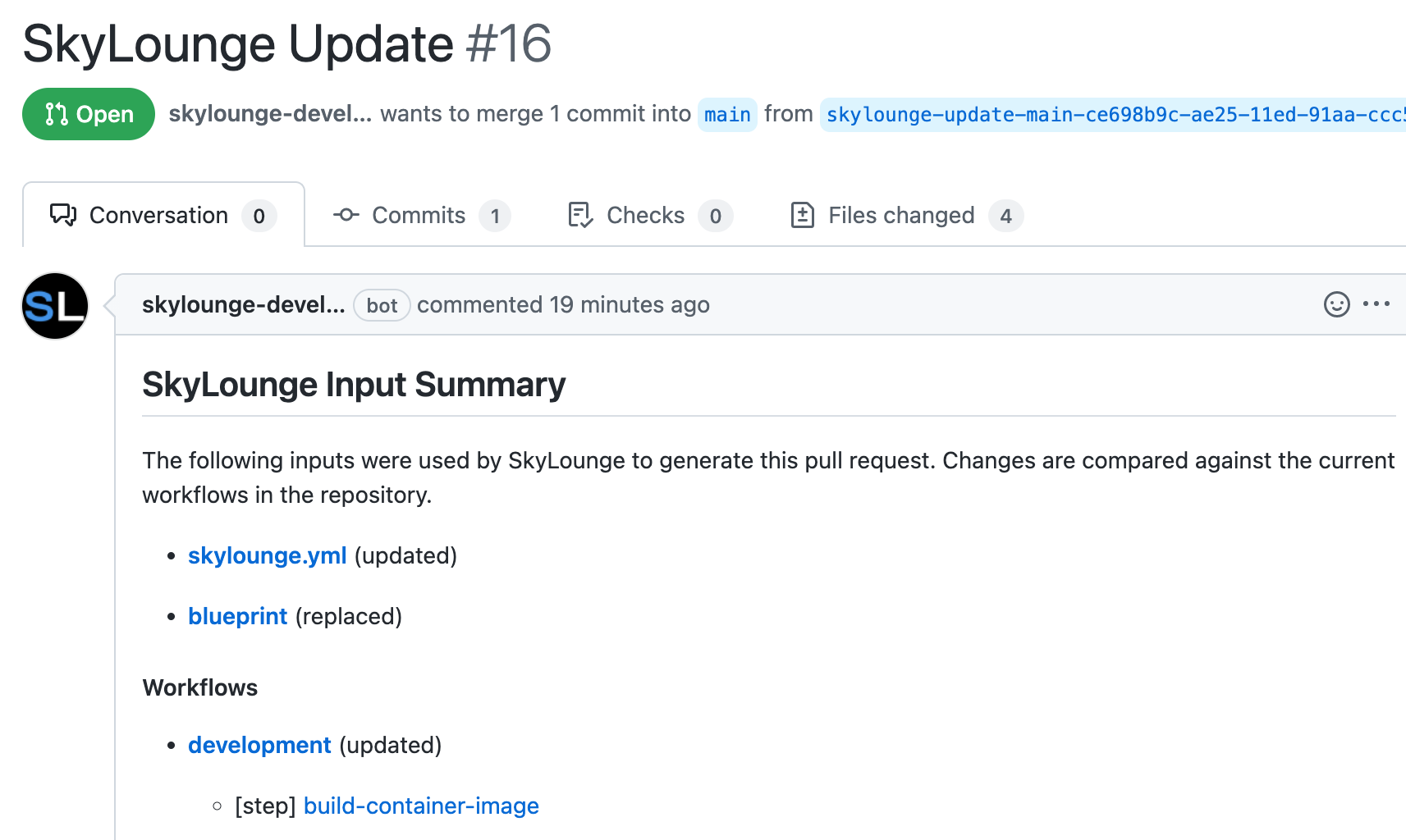1. Blueprints define automation
A blueprint defines the automation applied to a repository. Blueprints are shared across the organization. They describe the core automation and the application-specific automation provided by developer teams. Blueprints create shared understanding, remove duplication, and go far beyond just CI/CD.
2. Managed repository configuration
A single configuration file, skylounge.yml, is checked into each managed repository. It defines the repository-specific configuration, including the repository-specific automation inserted into the blueprint. The skylounge.yml keeps control in the developer’s hands.
3. Comprehensive automation
SkyLounge generates comprehensive automation, merging the commonality of the blueprint with customizations specified in the skylounge.yml. The result is full-lifecycle automation for your repository. And to ensure developers maintain control, SkyLounge will always open a pull request rather than making changes directly. Full-featured, full-control, full-lifecycle.
4. Always up to date
SkyLounge monitors the inputs for each managed repository (blueprints, workflow template, job & step definitions, and skylounge.yml). When any changes are detected, SkyLounge opens a new pull request. There is no need for each team to implement that new security scan or update their build tools.


